Commuting: wasted miles?
Before I begin I would like you all to read the following prepared statement: Riding to and from work is a fantastic way to get and stay fit, it saves a lot of money and it's far better for the environment than driving the same distance
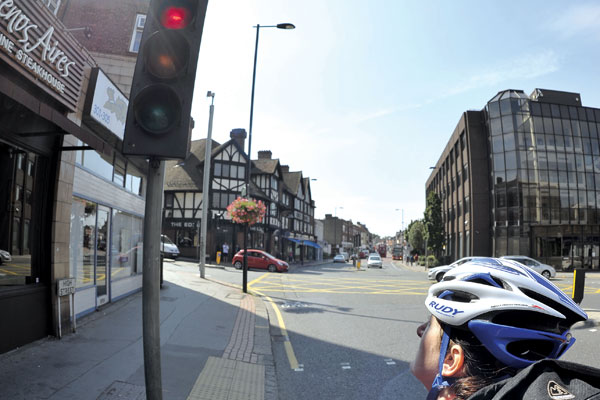

I do it every weekday and would very much like my office to be further from home so I could do a little bit more of it. It's also, for many people, the only or certainly the best way to fit some exercise into a busy life style.
But unfortunately it has its limitations. From a coaching perspective there are three things about commuting that result in the sort of nagging tension headache that normally only comes from filling in tax returns or reading legal documents. The first is that it's so stagnant.
You ride in, you ride home, it's the same route every day, and it always takes about the same length of time. That makes it hard to bend it to your will to fit different training requirements as time passes and training cycles come and go. The second is that it's so frequent. Most people do it twice a day on the days they do it and often several days in a row, making recovery (either from it or from other training sessions) more challenging than usual.
>>> Best hybrid bikes reviewed
The third is - oddly - that it's primarily a journey. You're trying to get somewhere by a certain time, often in heavier traffic than you'd otherwise choose to ride in, to start doing something that (however boring) is an important part of your life. What that tends to mean is that, when we commute, parts of our attention are already focused elsewhere, which doesn't tend to make for the very best training sessions.
But reality intrudes. So, what should you do if you do not have the luxury of being a full-time rider and are going to use your commute to train and you want to train as well as you can within (and around) its boundaries? Well, here are a few ideas for you.
Get The Leadout Newsletter
The latest race content, interviews, features, reviews and expert buying guides, direct to your inbox!
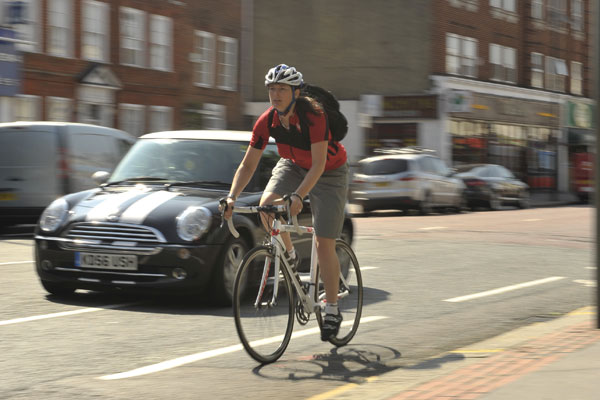
Don't do it!
Without wishing to seem wrong-headed and excessively negative, if you're really serious about improving your performance and you can find time to train elsewhere, you'll probably do far better if you don't commute by bike. All training requires compromise, but the simple truth is that using your rides to and from work as your training will usually result in even more compromises than a ‘standard' training ride.
So, if at all possible, get your key sessions done outside of your commute and find another way to get to work on those days.
Slow down!
Possibly the best tip we can give you about using your commuting as a part of your training is to slow it down. There's something about the need to get to work and the desire to get home that results in mindless grinding from most riders.
Couple that with the day-in, day-out nature of commuting, the work-day fatigue that we've already mentioned and the impromptu ego battles that sometimes surface when we encounter other riders, and commuting can easily have a gradual deadening effect on your performance.
Yes, you might be coping, and yes you might feel quite fit, but that sort of chronic fatigue can pop up very suddenly and can be disturbingly difficult to shift. Dropping the effort right down (to no harder than the top of Zone 2, and often even easier) on two or three days every week is the first step to managing that.
Take a week off
The second step to managing the gradual accumulation of fatigue that comes with commuting is to have the courage to put the bike aside and not commute (at all, or at the very least not as much or as hard) for several days every fourth week or so.
You may not feel you need the rest, but even so it's better to take it. By the time you do feel you need it, it could easily be too late.
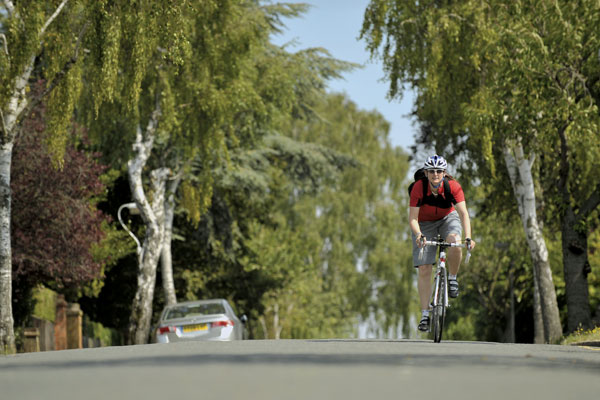
Take out the trash
As the seasons turn from winter, to spring to summer, the riding you do tends to shift from building endurance, efficiency and general conditioning towards event-specific performance, speed and more demanding sessions. And here, again, it's often a good idea to drop a commute or two so that your body can fully adapt after each hard session.
If this really isn't an option for you, at the very least plan your schedule so that you ride in very easy on the days when you have hard work planned, and do the work on the ride home.
Avoid the rush
So how to make the most of your commute. You can minimise the drawbacks and still make it a useful part of your training and your day. Perhaps the biggest problem with commuting is the traffic. School runs, morning business traffic, and car-bound commuters combine to make the roads around most workplaces pretty busy.
If you're looking to maintain a constant effort - however fast or slow - it's going to help a lot if you can simply avoid this traffic. Asking your boss for a later start may not get the best ever reception, but starting an hour earlier might... at the very least it's worth a try.
How many roads?
If you're serious about improving your performance you'll need to do more than build up a regular ride routine. Even on a commute you'll want to vary your sessions, and you'll find that works better if you can work out more than one route to work.
Ideally you need three: one that's as short as possible for easy recovery rides, one that's flat and straight for extended efforts in Zones 2, 3 and 4, and one that's rolling or twisty for sessions where varied efforts and surges are required. Plus varying your routes keeps you on your toes mentally and you won't doze your way to the office.
The long road home
It's also often worth working out a commuting route that's considerably longer and quieter (even if that means heading past home and turning back), because having the option of building up a steady effort over 90 minutes to two hours is extremely useful in the spring and in the summer if you're doing your intervals at the weekend.
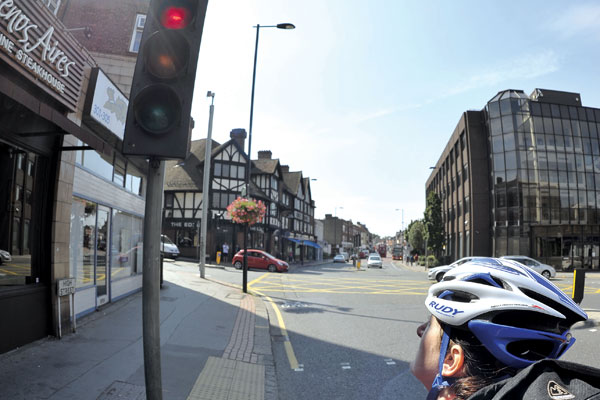
Safety first
Maybe it goes without saying, but just in case it doesn't, there's no point in taking a risk on the road just to get your session done to plan. Twelve minutes into a 20-minute block and slowed by traffic? Just wait until you're past and do the other eight.
Hit a changing light thee seconds from the end of your rep? Don't run it. There are no prizes available for being broken or dead. Similarly, steer clear of sprint sessions, aerobar riding and anything with really sudden stops and starts. The training benefits don't outweigh the risks.
Join the revolution
High and low-cadence work is a particularly easy way to add value to a commute without adding too much risk. (Provided you don't grind your knees to dust at 40rpm up all the climbs!) As a general rule you'll want more high cadence work than low because it'll tend to improve your efficiency more, but if you're struggling to generate torque down hills and at high speeds in races, some blocks of lower cadence might be a good initial step.
Rise and shine
Fighting your way out of the clutches of the duvet monster isn't the easiest pre-ride activity, so give yourself enough time before you head out to wake up, eat, wash and get ready. Ideally (and this is harsh) you'll want to eat about an hour before you start to ride, though if you're eating simple foods like ripe fruit or toast and honey you can move that to just 15 minutes before.
One good trick is to shower before you ride. Not only will you tend to stink rather less once you do get too work, it will also wake you up.
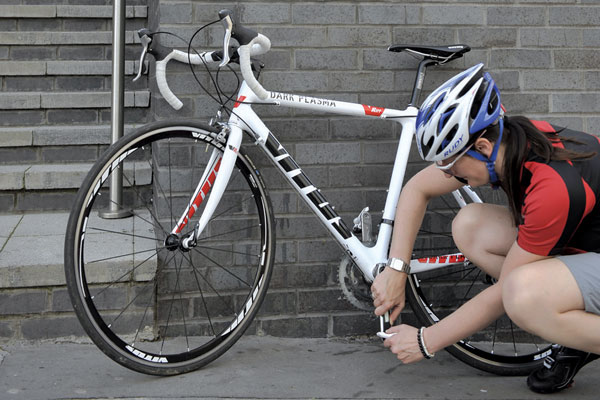
Get your kit right
If you have a race bike and a commuting or training bike think about set-up. We're not saying you have to ride your race bike into work all winter, but make sure that your commuting bike is set up the same way in terms of position, has clipless pedals and shoes with cleats in the same place etc..
It's also best to have a full set of working gears because, unless your commute is short, easy and flat, commuting on single or fixed is going to limit your training options and potentially (depending on the gearing) knacker your legs as well.
It's also very important that you change things like shorts and gloves, and wash your helmet and glasses regularly, as the film of dried sweat that builds up can be a haven for bacteria and other nasties.
This article was first published in the Autumn 2011 issue of Cycling Fitness. You can also read our magazines on Zinio, download from the Apple store and also through Kindle Fire.

Thank you for reading 20 articles this month* Join now for unlimited access
Enjoy your first month for just £1 / $1 / €1
*Read 5 free articles per month without a subscription

Join now for unlimited access
Try first month for just £1 / $1 / €1
Michelle Arthurs-Brennan the Editor of Cycling Weekly website. An NCTJ qualified traditional journalist by trade, Michelle began her career working for local newspapers. She's worked within the cycling industry since 2012, and joined the Cycling Weekly team in 2017, having previously been Editor at Total Women's Cycling. Prior to welcoming her first daughter in 2022, Michelle raced on the road, track, and in time trials, and still rides as much as she can - albeit a fair proportion indoors, for now.
Michelle is on maternity leave from April 2025 until spring 2026.
-
 'I've worked a lot on my sprint' - Kristen Faulkner plots unpredictability on racing return
'I've worked a lot on my sprint' - Kristen Faulkner plots unpredictability on racing returnOlympic champion looking forward to "exciting challenge" of continuing to outfox bunch
By Tom Davidson
-
 'This is a fresh start' - Belgian rider returns to professional cycling after two year anti-doping ban
'This is a fresh start' - Belgian rider returns to professional cycling after two year anti-doping banShari Bossuyt to ride for AG Insurance-Soudal from June
By Adam Becket